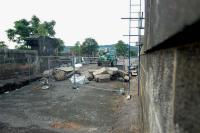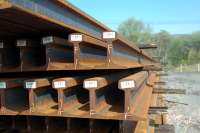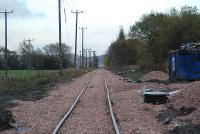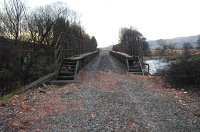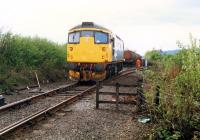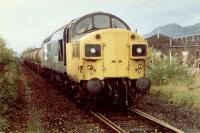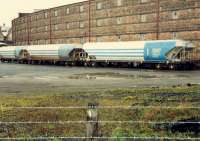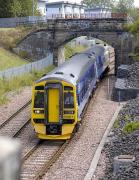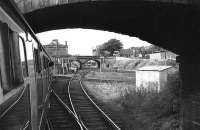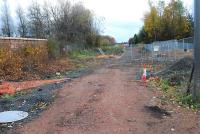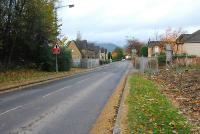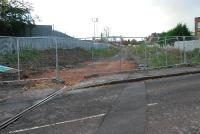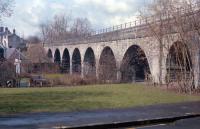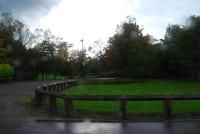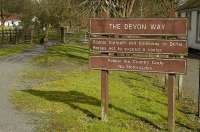Stirling and Dunfermline Railway
Introduction
This line is partly open with passenger services operating between Stirling and Alloa. After 2008, when the line partly re-opening, It was used between Stirling and Kincardine Junction (and on to Kincardine) for loaded coal trains for Longannet Power Station. Most of the open portion, Stirling to Alloa station, is being electrified. Jeffray Wotherspoon's SAK pages
Dates
Portions of line and locations
This line is divided into a number of portions.
Stirling to Dunfermline
Passenger and goods line from Stirling Middle Junction to Dunfermline [Upper].
This junction is south of Stirling station it is the location where the main line from Glasgow Queen Street, Edinburgh Waverley and the south meets the branch east to Alloa.
...
See also
Scottish Central Railway
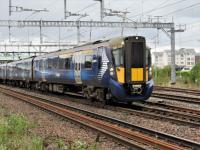
David Panton 26/09/2019
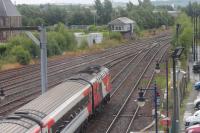
Alastair McLellan 29/07/2017
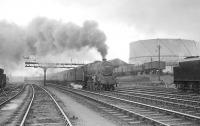
G H Robin collection by courtesy of the Mitchell Library, Glasgow 26/08/1950
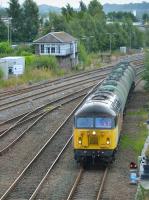
Bill Roberton 23/08/2017
This was the Stirling and Dunfermline Railway station directly alongside and to the east of the Scottish Central Railway's station. Today the stations are virtually indistinguishable and were officially merged in 1968. See the entry for Stirling. ...
More detailsThis level crossing was to the north of Sitrling East station, the Stirling and Dunfermline Railway and later North British Railway station. It was controlled by a signal box, Shore Road Level Crossing Signal Box, which was opened in 1887. This was on the west side of the line and south of the level crossing. Just to the west was the equivalent Shore Road Level Crossing [CR].
...
See also
Forth and Clyde Junction Railway
This was a two road locomotive shed approached from the north, from Shore Road Signal Box, over its turntable. It was on the east side of the Stirling and Dunfermline Railway north of Stirling station. To the east of the shed was Shore Road Goods.
...
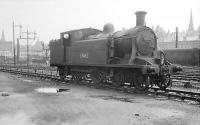
G H Robin collection by courtesy of the Mitchell Library, Glasgow 26/08/1950
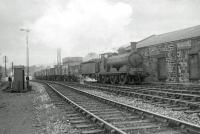
See
G H Robin collection by courtesy of the Mitchell Library, Glasgow 26/08/1951

G H Robin collection by courtesy of the Mitchell Library, Glasgow 26/08/1950
Shore Road Goods box was to the north of Shore Road Level Crossing [NB] and just south of Stirling Forth Viaduct [SandD]. The box was located on the west side of the NB line (with its back to the CR line).
...
This is a double track viaduct which crosses the River Forth to the north of Stirling station (and Stirling North Junction). The viaduct carries the line from Stirling to Alloa, Kincardine and Dunfermline Town.
...
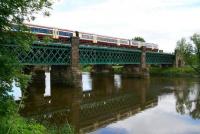
John Furnevel 12/06/2008

Ewan Crawford 12/05/2006
Between 1906 and 1907 there was a temporary Shore Road North box to the north of Stirling Forth Viaduct [SandD].
...
This was a two platform station in traditional North British Railway style. The goods yard was at the west end of the station, north of the line and approached from the west. The signal box was on the eastbound platform. The box opened in 1900 and closed in 1964.
...
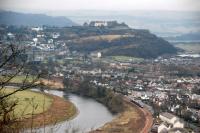
John Clark 24/03/2010
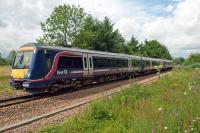
Mark Dufton 03/07/2010
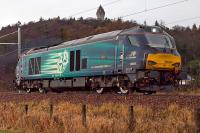
Mark Dufton 12/12/2020
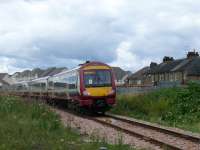
Brian Forbes /08/2008
This level crossing is at Waterside, just east of the former Causewayhead station on the line between Stirling and Alloa.
...

David Panton 22/07/1997
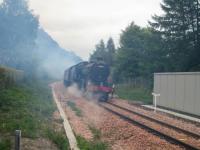
Hamish Baillie 15/05/2008
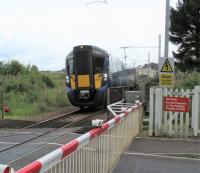
David Panton 21/08/2019
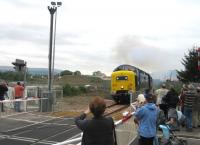
Hamish Baillie 15/05/2008
This was a level crossing to the east of Causewayhead, Waterside Level Crossing and the Abbey Craig on which the Wallace Monument stands.
...
This colliery was sunk between 1911 and 1914 by the Manor Powis Coal Company. It was equipped with Baum washers.
...
A signal box was opened at Manor Powis in 1913 for a new colliery, Manor Powis Colliery opened around 1914. A halt for the colliery was opened in 1916. The location was named for a now ruinous manor house just to the north.
...
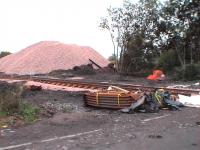
Brian Forbes /12/2006
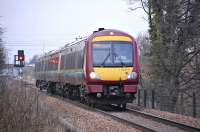
...
Bill Roberton 18/02/2011
Blackgrange was a very short lived station at the Blackgrange Level Crossing. Probably open for less than a year. The location was rural.
...
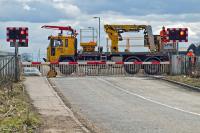
Mark Dufton 01/04/2018
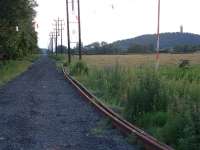
Ewan Crawford 01/07/2006

Bill Roberton 20/01/2009
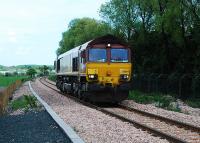
Ewan Crawford 19/05/2008
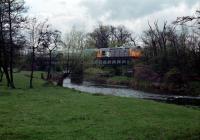
Ewan Crawford //1989

Ewan Crawford //1988
The junction was immediately west of Cambus station and was formed between the Stirling and Dunfermline Railway and the Alva Railway, the branch. The branch opened in 1863. It was single track and the main line double.
...
See also
Alva Railway
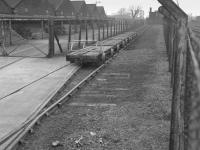
Bill Roberton //1987
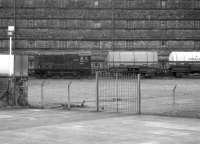
Bill Roberton //1987
This was a three platform station to the west of a level crossing and east of Cambus Junction. A footbridge was provided by the level crossing used to cross between the platforms and also for pedestrians when the crossing was closed.
...
See also
Alloa Marshalling Yard (British Railways)
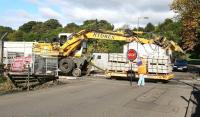
John Furnevel 17/10/2007

Ewan Crawford 08/10/2017
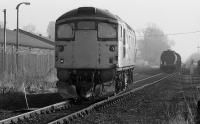
Bill Roberton //1991
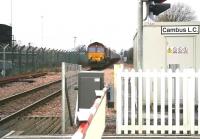
John Furnevel 22/12/2008
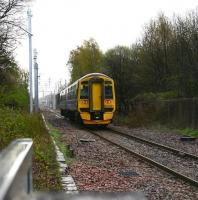
John Furnevel 26/04/2018
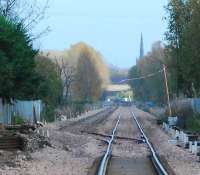
Ewan Crawford 12/11/2006
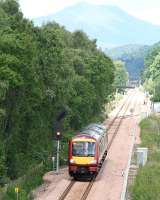
John Furnevel 12/06/2008

John Furnevel 26/04/2018
This was the junction between the Stirling and Dunfermline Railway of 1852 and the Alloa West to Longcarse (North British Railway) of 1885 which connected to the Alloa Railway. This was a junction between two double track lines immediately west of a level crossing ('Grange Crossing').
...
See also
Alloa Railway
Alloa Marshalling Yard (British Railways)
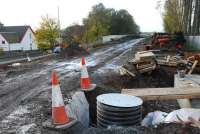
Ewan Crawford 12/11/2006
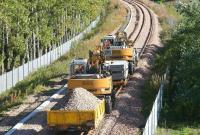
John Furnevel 04/10/2007
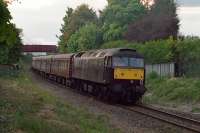
Mark Dufton 14/05/2017

Ewan Crawford 12/11/2006
This was a level crossing with Grange Place in the west of Alloa. The crossing was originally known as Grange Crossing.
...
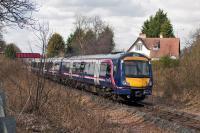
Mark Dufton 31/03/2012
This double track junction was to the west of Alloa [1st] station on the Stirling and Dunfermline Railway. Access to the harbour branch was from the east.
...

Ewan Crawford 12/11/2006
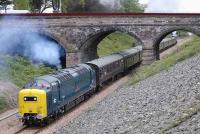
Bill Roberton 15/05/2008
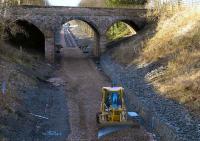
Bill Roberton 25/01/2007
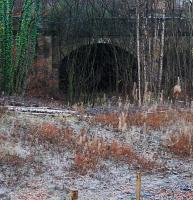
Ewan Crawford 05/01/2008
At its height this was a very fine station. It had an island platform with two bays at the west end, a large stone main building to the east and large glass canopies over the platforms. A stone bridge of four arches crossed the line at the east end of the station, separating the station building and bay platforms.
...
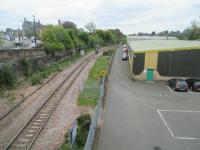
David Bosher 16/05/2016
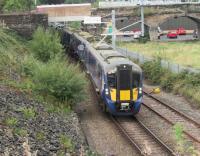
David Panton 26/09/2019
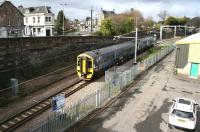
John Furnevel 26/04/2018
This junction was at the east end of Alloa [1st] station and was formed, in 1851, between the 1850 Dunfermline [2nd] to Alloa [1st] main line alignment of the Stirling and Dunfermline Railway and its 1851 branch to Tillicoultry.
...
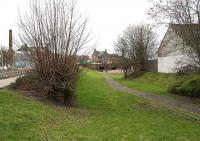
John Furnevel 23/01/2007
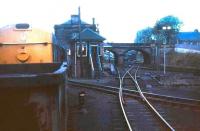
David Spaven //1973
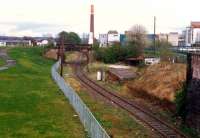
Ewan Crawford //1988
This is a single platform station opened in 2008 to the east of the original Alloa [1st] station. It is a terminus being on a siding served from the west, the direction of Stirling.
...
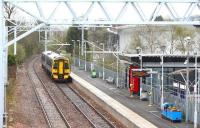
John Furnevel 26/04/2018
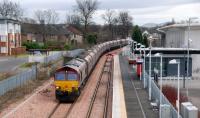
John Clark 23/02/2007
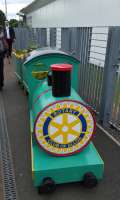
John Yellowlees 13/06/2016
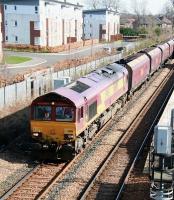
John Furnevel 09/05/2012
This two road shed was east of Alloa [1st], directly to the north of today's Alloa station.
...
The railway here opened in 1850, the line opening between Dunfermline Upper and Alloa [1st]. This level crossing was also known as Gaberston or Gabberston Crossing. Gaberston is to the north. The line was double track. The road was previously known as Cross Road.
...
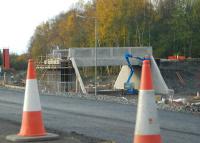
Ewan Crawford 12/11/2006
This siding was east of Hilton Road Level Crossing. The siding was a loop off the eastbound line and on the north side of the railway. Crossovers allowed access to the siding from the westbound line. The signal box, 'Whinhill Colliery', was on the south side of the line.
...
This loop is east of Alloa. It runs west from the site of Kincardine Junction to roughly the site of Whinhill Siding, a passing loop on an otherwise single track line between Stirling and Charlestown Junction, save for Cambus Loop, Alloa station siding at the out of use sidings at Longannet Power Station.
...
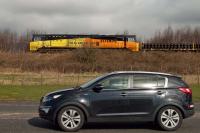
Mark Dufton 15/03/2020
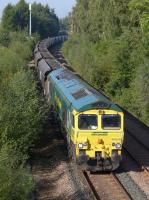
Bill Roberton 29/09/2015
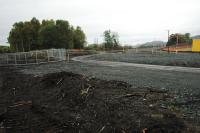
Ewan Crawford 23/10/2005
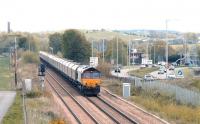
John Furnevel 09/05/2012
At this junction the Kincardine Branch (North British Railway) met the older Stirling and Dunfermline Railway. The branch was to become a loop when extended to Elbowend Junction. The junction was double track with the branch singling just beyond the junction. The signal box was in the 'V' of the junction. The junction was north of Kincardine itself.
...
See also
Kincardine Branch (North British Railway)
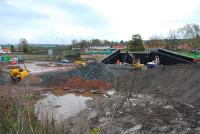
Ewan Crawford 12/11/2006
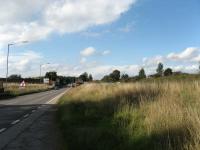
Mark Poustie 23/09/2006

Ewan Crawford 12/11/2006
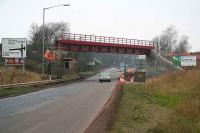
John Furnevel 22/12/2006
This was a two platform station. It was between the B910 and a viaduct over the Black Devon. There was a small goods yard on the north side, east end of the station, approached from the east.
...
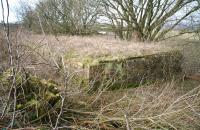
John Furnevel 28/02/2008
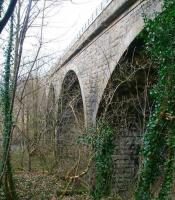
John Furnevel 28/02/2008
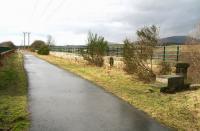
John Furnevel 28/02/2008
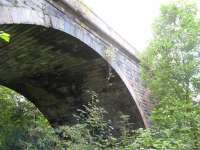
Mark Poustie 23/09/2006
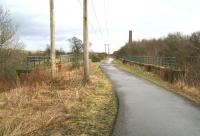
John Furnevel 28/02/2008
This signal box opened in 1945, replacing a temporary box of 1944. The box was for the siding to Tulligarth Colliery Pit No 2, on the south side of the line and east of the Black Devon Viaduct. The colliery predated the boxes and was expanded around 1935-45. The western part of the site had the Cherryton Brick Works. The signal box was on the south side of the junction for the siding ...
More detailsThis brick works was built in the Tulligarth Colliery area. It was on the immediate south side of the Stirling and Dunfermline Railway which served it.
...
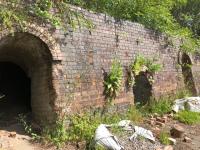
Duncan Ross 15/06/2019
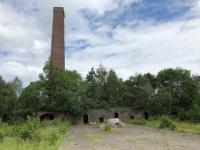
Duncan Ross 15/06/2019
This was a two platform station on a double track railway.
...
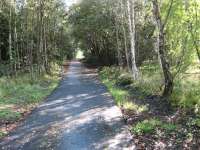
Mark Poustie 23/09/2006

Mark Poustie 23/09/2006
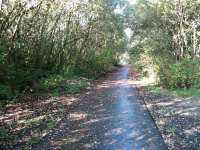
Mark Poustie 23/09/2006
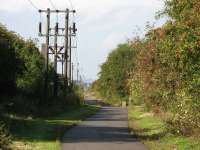
Mark Poustie 23/09/2006

John Furnevel 28/02/2008

John Furnevel 28/02/2008

Mark Poustie 23/09/2006

John Furnevel 28/02/2008
This siding was on the north side of the line, accessed from the east between Bogside Fife and Forest Mill. ...
More detailsThis was a two platform station on the Stirling and Dunfermline Railway. There were sidings on the north side, latterly gunpowder sidings served from the east. The platforms were to the east. The station house was to the north of the eastbound platform and still exists. (The 1895 OS map shows this was also the local post office.)
...
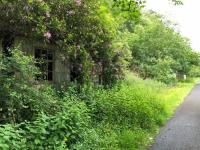
...
Duncan Ross 15/06/2019
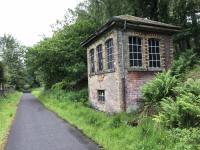
Duncan Ross 15/06/2019
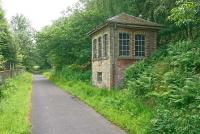
Andy Furnevel 23/06/2019
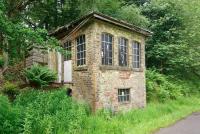
Andy Furnevel 23/06/2019
This was a two platform station. There was a station house near the westbound platform. A station building was added on the westbound platform and a smaller on the eastbound.
...
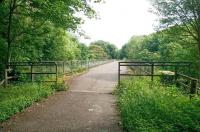
Andy Furnevel 23/06/2019
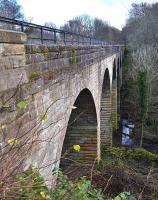
Bill Roberton 20/11/2018
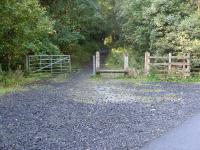
Mark Poustie 23/09/2006
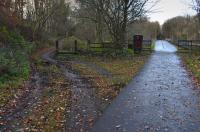
Bill Roberton 20/11/2018
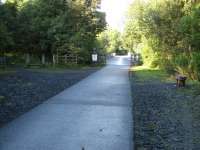
Mark Poustie 23/09/2006
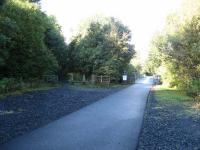
Mark Poustie 23/09/2006
This was a two platform station. It was built over station road, south of Oakley. There was a goods yard to the west, on the south side of the line and served from the west. The main station building was on the westbound platform, just to the west of the bridge.
...
See also
Kinnedar Branch (North British Railway)
Forth Ironworks Railway
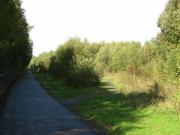
Mark Poustie 23/09/2006
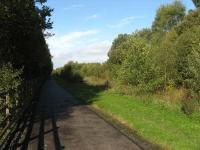
Mark Poustie 23/09/2006
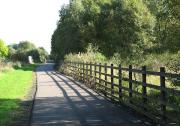
Mark Poustie 23/09/2006
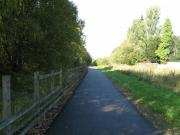
Mark Poustie 23/09/2006
This junction was immediately west of Whitemyre Junction. (See Whitemyre Junction for main entry.) At Charlestown Junction a short curve ran south east to the Charlestown Railway. This opened in 1850 to connect the Stirling and Dunfermline Railway to that line. It closed in 1967. Whitemyre Junction was with the West of Fife Mineral Railway, this portion opening in 1858 and ...
More detailsThis was a junction in the west of Dunfermline. It was a pair of junctions. The older junction was Charlestown Junction [Whitemyre] which opened between the Stirling and Dunfermline Railway of 1849 and a short branch south east to the Charlestown Railway.
...
See also
West of Fife Mineral Railway
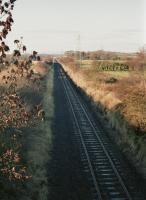
Bill Roberton //1985
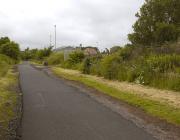
Bill Roberton 27/06/2008
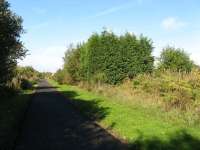
Mark Poustie 23/09/2006
This is a disused double track nine arch viaduct over the defile of the Tower Burn. The eastern arch crosses over Bruce Street.
...
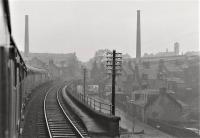
Brian Haslehust 01/12/1963
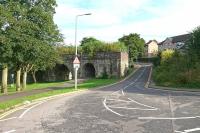
Andy Furnevel 31/08/2019
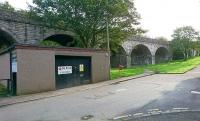
Andy Furnevel 31/08/2019
This was a station with two main through platforms, the north of which was an island with a second face. At the west end was a bay on the south side.
...
See also
Dunfermline Branch (Edinburgh and Northern Railway)
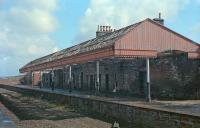
Ewan Crawford //1989
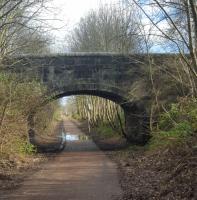
John Yellowlees 10/03/2017
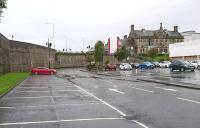
Andy Furnevel 31/08/2019
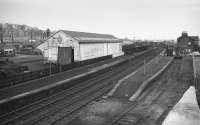
Bill Roberton /12/1973
Tillicoultry Branch
Passenger and goods line from Alloa East Junction to Tillicoultry.
This junction was at the east end of Alloa [1st] station and was formed, in 1851, between the 1850 Dunfermline [2nd] to Alloa [1st] main line alignment of the Stirling and Dunfermline Railway and its 1851 branch to Tillicoultry.
...

John Furnevel 23/01/2007

David Spaven //1973

Ewan Crawford //1988
This coal siding led off the Alloa Station Goods's goods loops on the north side of Alloa East Junction. It was to the north east, parallel to the Tillicoultry branch.
...
These centralised workshops were opened in 1954 to replace older works. The site included a workshops building, central stores and a central garage.
...
This signal box was a short distance north of Alloa [1st] on the branch to Tillicoultry. It controlled access to the Sauchie Colliery mineral line which ran east to Alloa Colliery Jellyholm Pit and Sherriffyards Colliery.
...
This level crossing east between Sauchie Colliery Signal Box (to the south) and Sauchie station. There was a crossing keeper's cottage on the west side of the line, north of the level crossing. The crossing was on the access road from Whiteyett to Auchinbaird Farm.
...
This was a small two platform station. To the north was Auchinbaird Siding, a reversing spur for the pits at Sauchie. ...
More detailsThis siding was a reversing spur on the east side of the line which gave access to pits at Sauchie. It was located just north of Sauchie station and was retained after closure of the pits. ...
More details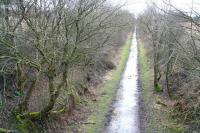
John Furnevel 28/02/2008
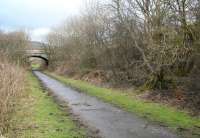
John Furnevel 28/02/2008
This signal box was on the west side of the double track line between Alloa [1st] and Tillicoultry. Just to the south was Sauchie station.
...
Glenfoot was a very short lived terminus used to open the line from Alloa before the Tillicoultry Viaduct was completed. The station was south west of the viaduct. ...
More detailsThis double track lattice viaduct was west of Tillicoultry.
...
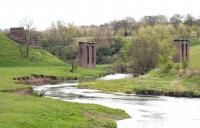
John Furnevel 28/04/2005
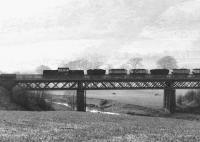
John Furnevel 07/10/1971
This station was originally a terminus and later a through station. It was located on the west side of a level crossing over Moss Road to the south of Tillicoultry. It was rebuilt at least three times.
...
See also
Devon Valley Railway
Tillicoultry 1,2 Colliery Line (Alloa Coal Company)
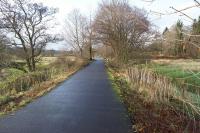
John McIntyre 25/11/2018
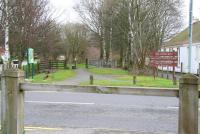
John Furnevel 06/03/2008
Alloa Harbour Branch
Passenger (briefly) and goods branch to Alloa Harbour from Alloa Harbour Junction, just west of Alloa [1st] station.
This double track junction was to the west of Alloa [1st] station on the Stirling and Dunfermline Railway. Access to the harbour branch was from the east.
...

Ewan Crawford 12/11/2006

Bill Roberton 15/05/2008

Bill Roberton 25/01/2007

Ewan Crawford 05/01/2008
This goods yard was on the Alloa Harbour branch. The yard was on the north side of the Alloa Harbour Junction to Alloa Wet Dock fork of the harbour branch.
...
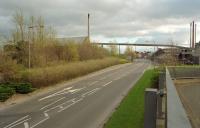
Ewan Crawford 29/03/1997
This was a goods yard on the short branch from Alloa Harbour Junction and was north of the short lived Alloa Ferry station.
...
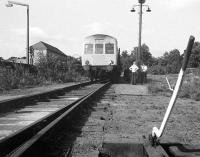
Bill Roberton 28/08/1976
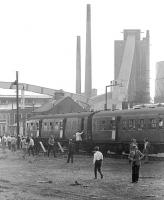
Bill Roberton 28/08/1976
This was a short lived passenger station on the north bank of the River Forth. It was just east of the original part of the Alloa Glass Works.
...
Charlestown Railway Curve
This junction was immediately west of Whitemyre Junction. (See Whitemyre Junction for main entry.) At Charlestown Junction a short curve ran south east to the Charlestown Railway. This opened in 1850 to connect the Stirling and Dunfermline Railway to that line. It closed in 1967. Whitemyre Junction was with the West of Fife Mineral Railway, this portion opening in 1858 and ...
More details










